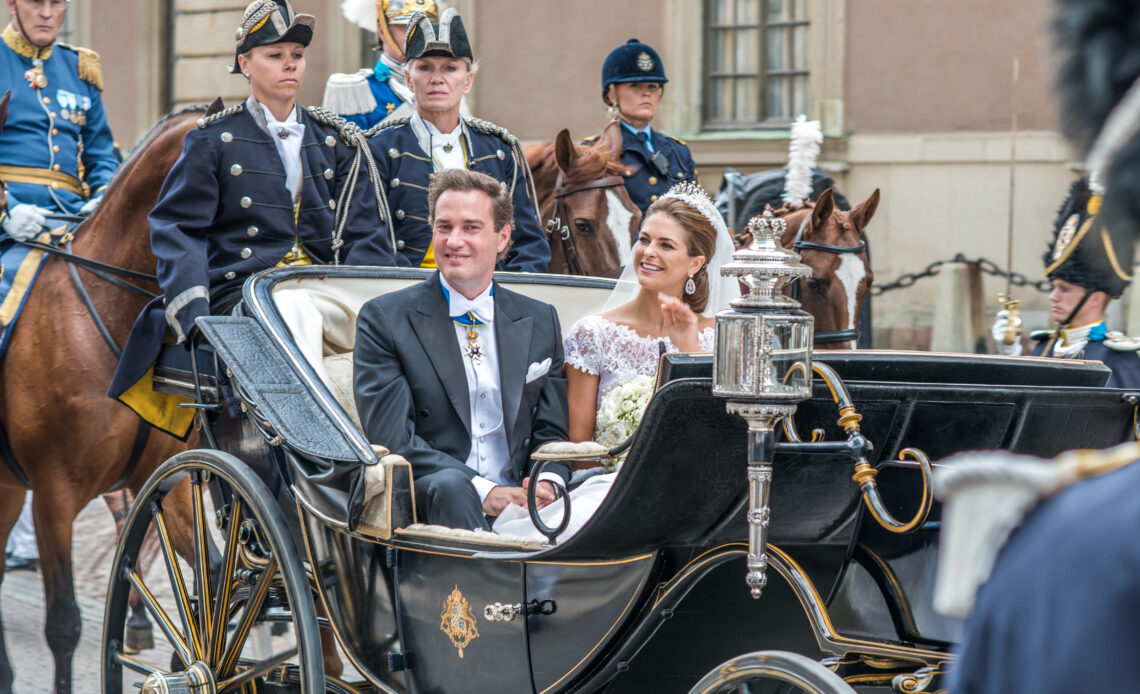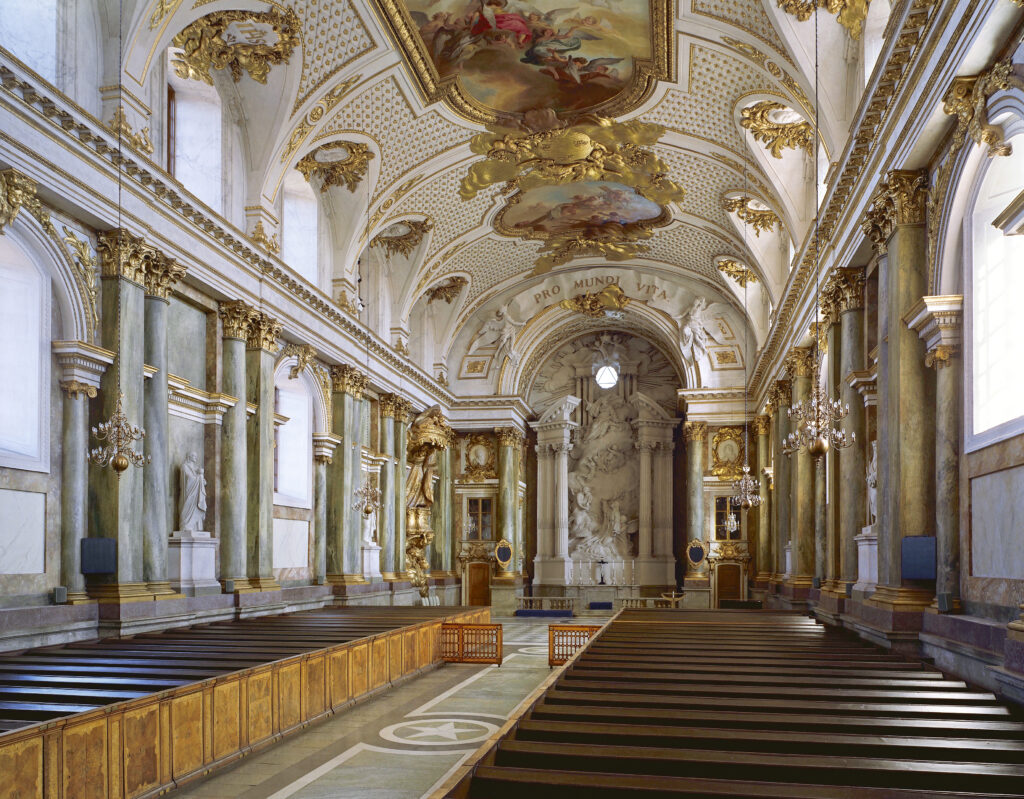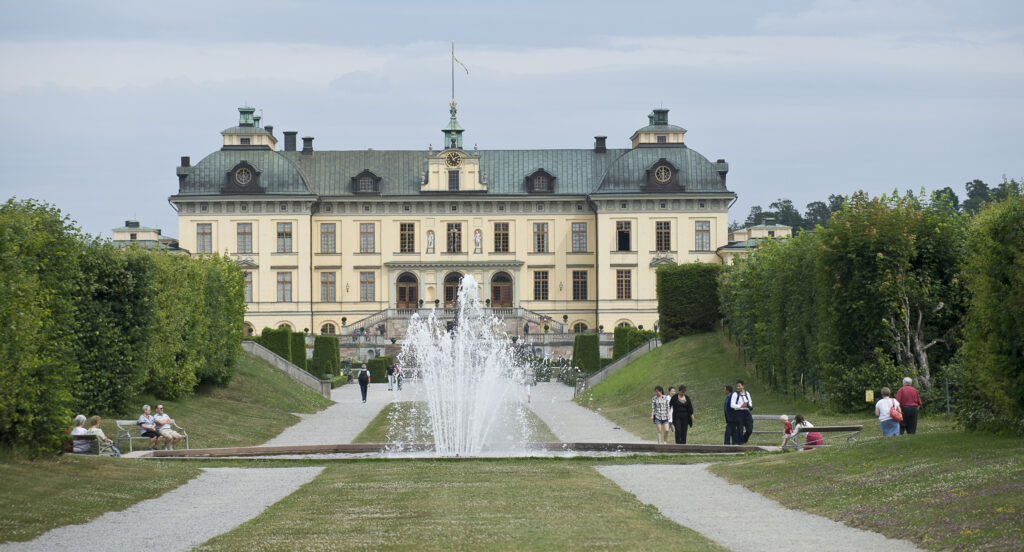
Princess Madeleine and Chris O’Neill got married ten years ago in a ceremony that symbolised hope and love that triumphs over darkness, following her breakup with her previous fiancé just two years prior.
The day’s events took place mainly in two venues: the Royal Palace’s Royal Chapel, in the centre of Stockholm, and Drottningholm Palace, where the bride and groom decided to hold their reception.
Slottskyrkan (or Palace Chapel), as we see it today, is the result of a reconstruction that started after the devastating fire that destroyed most of the old Three Kronor Palace in 1697 and was completed with the consecration of the new space in 1754.

The reconstruction of the palace, including its church, was assigned to architect Nicodemus Tessin, who was already involved with the work in the previous church as a designer for the plaster forms, which Giuseppe Marchi then created. Following his death, the works were completed by architect Carl Hårleman, who carried out the original project for the most part, albeit with some adjustments.
However, the new chapel was to be designed in a baroque style, which made it impractical to keep its location the same as the previous one; the chapel that burned was located on the north side of the Three Kronor Palace, whereas Slottskyrkan is located where the State Room used to be, in a virtual continuation between the divine and mundane powers of the sovereign.
Since its reopening, the Royal Palace’s Royal Chapel has been the theatre of many important events for the Royal Family, including the weddings of Princess Christina (1987), Princess Madeleine (2013) and Prince Carl Philip (2015), the funeral of Princess Lilian (2013, only a few months before Princess Madeleine’s wedding), and the christenings of Princess Estelle (2012) and Prince Oscar (2016).
Drottningholm Palace is located on the island of Lovön, in Stockholm County, and is the current private residence of the Royal Family.
It is much more ancient than the Royal Palace, as its original nucleus was built in 1580, a gift from King John III of Sweden for his Queen, Catherine Jagiellon – hence the name, which in English translates to “Queen’s islet.”

In 1661, Queen Eleonora tasked Nicodemus Tessin Sr with redesigning and rebuilding the castle. Upon the senior’s death, his son (Nicodemus Tessin Jr, the architect who also worked on the Royal Palace) completed the building project, as well as supervised the entire process of the interior designs.
In 1762, a fire destroyed parts of the interior; Queen Louisa Ulrika (who was born a Prussian Princess) rebuilt the theatre, made it grander, and changed the entire palace’s interior design into a French Rococo style.
Following the 1809 coup and the holding of the King in one of the palace’s rooms, the restored King Charles XVI John, the palace was abandoned, leading to disrepair until 1846, when King Oscar I carried out the first repair works.
However, both he and Oscar II preferred adapting the palace to the latest architectural fashion rather than restoring it to its original form; it was only in 1907 that a massive four-year project was initiated by King Gustav V to bring the original 18th-century appearance back, which is its current form.
King Carl XVI Gustaf and his family moved there in 1981 after living in an apartment on the second floor of the Royal Palace in Stockholm for many years.
Drottningholm Palace is currently most famous for its Chinese Pavilion, which was the major contributor to the castle being declared a UNESCO World Heritage Site. The residence also has its own chapel, which was used by Prince Carl Philip and Princess Madeleine to christen their own children: Prince Alexander (2016), Prince Gabriel (2017), Prince Julian (2021), Princess Leonore (2014), Prince Nicolas (2015), and Princess Adrienne (2018).
Curiously enough, it just so worked out that Princess Leonore and Princess Adrienne (Princess Madeleine’s two daughters) could be christened on their parents’ wedding anniversary, Leonore on the first and Adrienne on their fifth. It was a perfect way to replicate the celebrations of a wedding reception as the family keeps growing.

